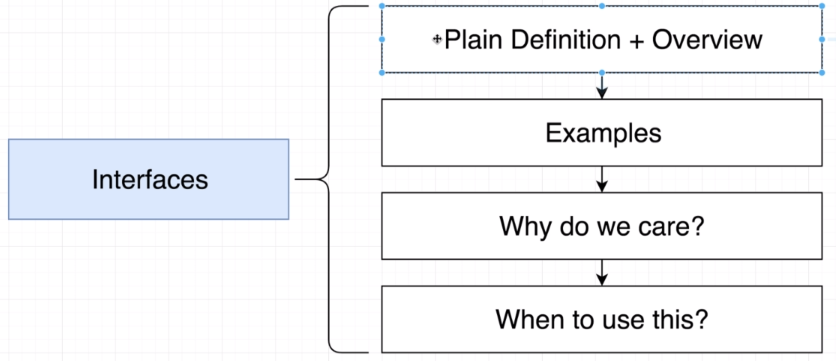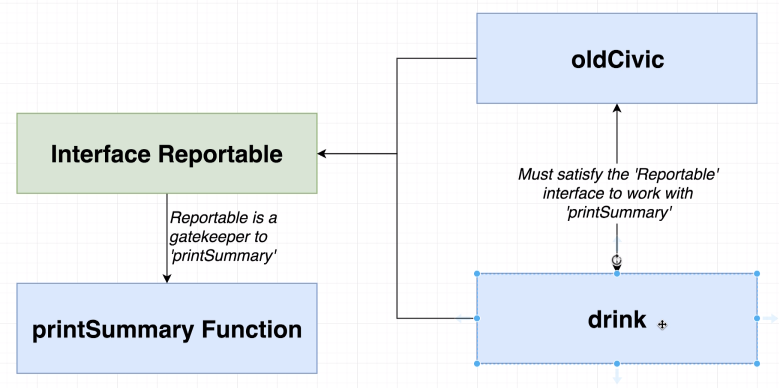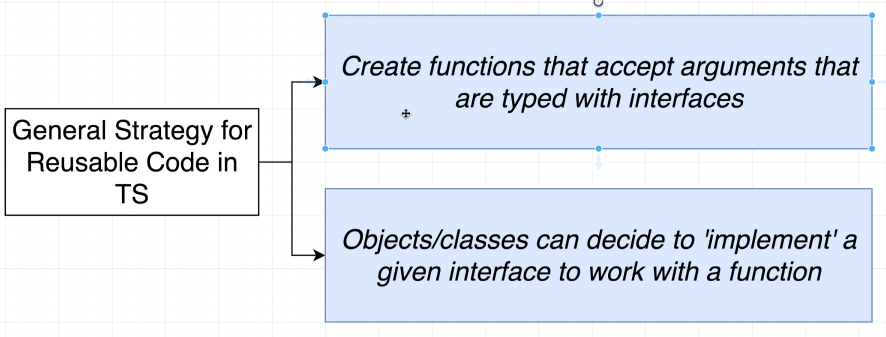Typed Interfaces
Interfaces
이번에는 Interface에 대해 알아보도록 하겠습니다.
Long Type Annotations
지금까지 우리가 배워온 것으로 코드를 작성하겠습니다.
const oldCivic = {
name: "civic",
year: 2000,
broken: true
};
const printVehicle = (vehicle: {
name: string;
year: number;
broken: boolean;
}): void => {
console.log(`Name: ${vehicle.name}`);
console.log(`Year: ${vehicle.year}`);
console.log(`Broken: ${vehicle.broken}`);
};
vehicle을 설명하는 annotation을 보면 vehicle parameter에 대한 설명이 적혀있는데 길고 읽기 힘들게 되어있습니다. 이 읽기 힘든 annotation 코드를 interface로 대체해보도록 하겠습니다.
Fixing Long Annotations with Interfaces
인터페이스란 특정 객체의 property가 가지는 type을 묘사하는 custom type입니다. 우리가 스스로 만드는 type이라 보시면 됩니다.
interface Vehicle {
name: string;
year: number;
broken: boolean;
}
const oldCivic = {
name: "civic",
year: 2000,
broken: true
};
const printVehicle = (vehicle: Vehicle): void => {
console.log(`Name: ${vehicle.name}`);
console.log(`Year: ${vehicle.year}`);
console.log(`Broken: ${vehicle.broken}`);
};
이렇게 하면 printVehicle 함수의 argument로 Vehicle interface처럼 name은 string, year은 number, broken은 boolean type을 가지는 객체가 와야합니다.
Syntax Around Interfaces
interface의 property로는 primitive type외에 함수도 올 수 있습니다.
interface Vehicle {
name: string;
year: Date;
broken: boolean;
summary(): string;
}
const oldCivic = {
name: "civic",
year: new Date(),
broken: true,
summary(): string {
return `Name: ${this.name}`;
}
};
const printVehicle = (vehicle: Vehicle): void => {
console.log(vehicle.summary());
};
printVehicle(oldCivic);
$ ts-node .\interfaces.ts
Name: civic
Functions in Interfaces
방금 작성한 코드를 보도록 하겠습니다.
interface Vehicle {
name: string;
year: Date;
broken: boolean;
summary(): string;
}
const oldCivic = {
name: "civic",
year: new Date(),
broken: true,
summary(): string {
return `Name: ${this.name}`;
}
};
const printVehicle = (vehicle: Vehicle): void => {
console.log(vehicle.summary());
};
printVehicle(oldCivic);
printVehicle 함수를 보면 vehicle의 summary property만을 사용하는 것을 확인할 수 있습니다. Vehicle interface에서 property는 중요해보이지 않는군요. 다른 property들을 지우고 코드를 돌려보겠습니다.
interface Vehicle {
summary(): string;
}
const oldCivic = {
name: "civic",
year: new Date(),
broken: true,
summary(): string {
return `Name: ${this.name}`;
}
};
const printVehicle = (vehicle: Vehicle): void => {
console.log(vehicle.summary());
};
printVehicle(oldCivic);
$ ts-node .\interfaces.ts
Name: civic
에러없이 잘 작동하는 것을 보실 수 있습니다. 이말은 Vehicle annotation은 해당 property가 있고 type을 만족하는 지만 확인한다는 것입니다. oldCivic 객체가 다른 property를 가지고 있는냐 없느냐를 따지지 않는다는 의미입니다.
Code Reuse with Interfaces
interface Reportable {
summary(): string;
}
const oldCivic = {
name: "civic",
year: new Date(),
broken: true,
summary(): string {
return `Name: ${this.name}`;
}
};
const drink = {
color: "brown",
carbonated: true,
sugar: 40,
summary(): string {
return `My drink has ${this.sugar} grams of sugar`;
}
};
const printSummary = (item: Reportable): void => {
console.log(item.summary());
};
printSummary(oldCivic);
printSummary(drink)
위 코드를 보면 drink 객체를 추가한 것을 확인할 수 있습니다. drink 객체는 oldCivic 객체처럼 string을 반환하는 summary property를 가지고 있습니다. 따라서 둘다 Reportable type을 만족시킵니다. 따라서 위 코드를 돌리면 올바르게 작동합니다.
여기서 의미하는 것은 하나의 interface로 다른 object의 다른 property가 올바르게 동작하는지 제어할 수 있다는 점입니다.




